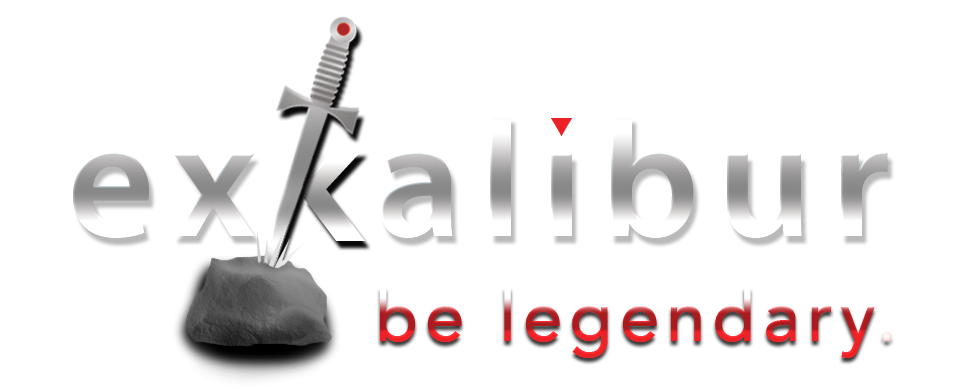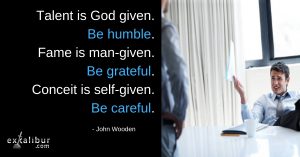What can you accomplish in a flash of time?
It lasts about 300 to 400 milliseconds. It occurs about 10 to 20 times per minute.
Over the course of a day, excluding about 8 hours of sleep, it amounts to about an hour and 20 minutes on average, a fair chunk of time in our waking day.
If you consider that the universe is about 14 billion years old, about 54,000 years would pass by during any given span of those milliseconds.
Some might argue that we can’t see anything during that period.
Yes, all that happens in the blink of an eye … about 1/3 of a second.
It ain’t much but in those small fractions, a lot can occur.
For Olympic athletes, the difference between a gold medal and fourth place averages about one-half of 1 percent when measuring fitness, according to the U.S. Olympic Committee’s psychologists.
[pullquote]Remember … you won’t BECOME a better leader until you start BEING a better leader. Start by making sure you’re not creating your own distractions and implement the one-word formula to avoid disaster.[/pullquote]
How fast is the blink of an eye?
The blink of an eye lasts much longer.
That’s the small measure that differentiates superior performance and watching the medal ceremony from the bleachers.
Not sure about that? Here’s a simple test: Name a previous bronze medalist in any Olympic sport. Anyone?
Thought so, as I dare say none of us remembers the name of a bronze medalist, let alone someone not on the medal stand at all.
Are you pushing your organization hard enough be #1?
So, here’s the question: How fit is your organization?
Is it in contention for a medal or just an also-ran, struggling to keep up and unwilling to put in the work to win?
Let’s take a look at the seven most important components of fitness and apply that lens to your organization.
What are the 7 Essential Components of Fitness?
Strength
We can measure strength in a number of important ways, but it must start with the quality of your leadership team.
It’s very simple: There is absolutely no substitute for hiring and retaining “A” players to create the best possible leadership team. Period.
Great athletes = great performers = great performance.
You should couple this standard with a measure of your financial strength … your ability to withstand unexpected forces like the Great Recession of 2008 … by looking at your balance sheet and the strength of your free cash flow.
Power
While this bears a family resemblance to strength, it’s more focused on the explosive bursts of strength required at critical moments.
This determines your business’ ability move quickly to attack initiatives by applying all the resources you can muster at that precise moment.
When you have an “all hands on deck” challenge that requires a rapid, full force response, your power will make all the difference.
Stamina
This fitness attribute refers to your ability to sustain the skills and capabilities of your organization over extended periods of time.
More than anything, it requires proven and reliable systems and processes to ensure a consistent and sustainable delivery of your products and services.
Constant training and education is essential to achieve a high level of fitness in this category.
[pullquote]Every week, we’re sharing valuable and practical leadership tips and tools to help you BECOME a better leader. Why not get these valuable tips and techniques sent directly to your inbox every week so you don’t miss them?[/pullquote]
Agility
This characteristic refers to the organization’s strategic commitment to respond quickly to change.
Our ability to create change initiatives is critical, particularly in this era of rapid technological innovation.
We need to be hyper-alert to changes around us so we can react with alacrity and purpose.
If you are too slow to react, you can be dead certain you won’t be standing on the medal platform.
Flexibility
In some ways, flexibility is a kissing cousin to agility.
In this case, it refers to an operational flexibility that allows you to deploy your resources in unique and varying ways to respond to the needs of your customers and the marketplace.
While agility requires an eternal commitment to strategic change, flexibility defines your organization’s physical capacity to flex its financial, human and physical talents to respond to changing circumstances.
Coordination
[pullquote]“The price of success is hard work, dedication to the job at hand, and the determination that whether we win or lose, we have applied the best of ourselves to the task at hand.” ~ Vince Lombardi[/pullquote]
For athletes, being coordinated requires that all of their mental and physical attributes work in harmony, with choreographed timing, to create the desired movement.
In our organizations, that coordination means that we need to burn down the silos and build a collaborative culture that synchronizes and integrates all the parts so that a common goal can be achieved.
Balance
While coordination informs it, balance requires the allocation of resources.
Your organization needs to shape its multiple, and sometimes conflicting, goals into a cohesive strategy that balances the needs of the company’s various constituencies.
Are You ON the Medal Stand … or are you content with the grandstand?
How would you answer these questions?
Are you developing the characteristics of an Olympic athlete?
Are you digging hard enough to achieve superior performance in your business?
There’s a fine line of minuscule proportions between wearing a gold medal, and watching from the 65th row.
Are you willing to get to work now to make sure your company is standing proudly on the medal stand?
If not, why not?





